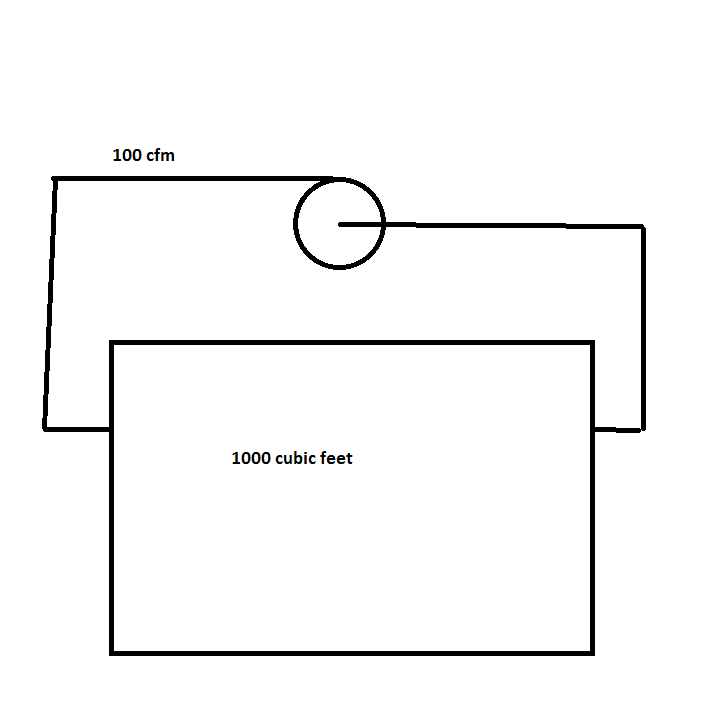We are doing some work at a small private school. They've asked us to go through the school and determine the ACH in each classroom and if they are getting the required 4-6 ACH as suggested by the CDC based on the new Covid Requirements for schools.
The document they gave us lays out the standard ACH formula. As an example they use a room 6883 cu/ft.
760 cfm of supply air. 20% outdoor air =152 cfm OA so 1.3 ACH which doesn't meet the 4-6 ACH.
Then they mention adding supplemental ventilation or filtration as options to increase the ACH. As their example, they can't add more ventilation but can use MERV 13 filters. They then use this calculation.
760 cfm
20% OA 152 cfm
recirculated air 760-152=608 cfm
Clean recirculated air through MERV 13 608*.8 efficiency = 486 cfm
486 recirc air + 152 cfm OA= 638 cfm
ACH (638cfm * 60/hr)/ 6883cu/ft=5.6 ACH
I've never seen the portion where they use the recirculated air through the filters for the ACH calculation.
If the school currently has MERV 8 filters, can I use 35% in the formula?
Whenever calculating ACH in the past we've always just used the supply air being supplied to the room in the calculation. Should I be doing it using this formula they are using?
The document they gave us lays out the standard ACH formula. As an example they use a room 6883 cu/ft.
760 cfm of supply air. 20% outdoor air =152 cfm OA so 1.3 ACH which doesn't meet the 4-6 ACH.
Then they mention adding supplemental ventilation or filtration as options to increase the ACH. As their example, they can't add more ventilation but can use MERV 13 filters. They then use this calculation.
760 cfm
20% OA 152 cfm
recirculated air 760-152=608 cfm
Clean recirculated air through MERV 13 608*.8 efficiency = 486 cfm
486 recirc air + 152 cfm OA= 638 cfm
ACH (638cfm * 60/hr)/ 6883cu/ft=5.6 ACH
I've never seen the portion where they use the recirculated air through the filters for the ACH calculation.
If the school currently has MERV 8 filters, can I use 35% in the formula?
Whenever calculating ACH in the past we've always just used the supply air being supplied to the room in the calculation. Should I be doing it using this formula they are using?

